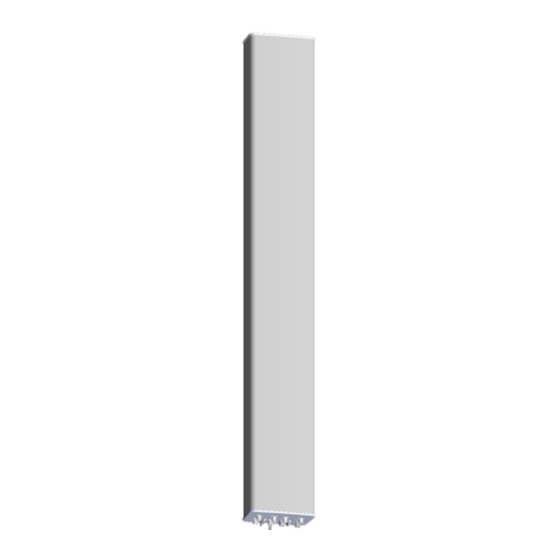Andrew CommScope Argus 사용 설명서 - 페이지 6
{카테고리_이름} Andrew CommScope Argus에 대한 사용 설명서을 온라인으로 검색하거나 PDF를 다운로드하세요. Andrew CommScope Argus 8 페이지.

Instruction Manual, 353mm (13.9") Profile Panel Antennas
Port and Band
Identification
Remote
Electrical Tilt
Connection
RF Cable
Connection
Each RF and/or AISG port on the antenna is numbered and identified in
accordance with AISG Standard "AISG Antenna Port Color Coding".
Each RF band in the antenna corresponds with a pair of ±45° polarized
RF ports (an array), with the band numbers rising in step with the port
numbers, ie Band 1 corresponds with Ports 1 & 2, Band 2 corresponds
with Ports 3 & 4 etc.
Ports are numbered starting with RF low frequency band(s) first,
followed by higher frequency bands. For bands operating at the same
RF frequency, ports associated with arrays at the bottom of the antenna
are numbered before ports associated with arrays at the top.
For remote tilt antennas, depending on the configuration of AISG
employed, the antenna will report the bands differently to the primary
controller as follows:
SRET: For either AISG1.1 or 2.0, a multiband antenna configured as
cascaded SRET will report to the primary controller as multiple
antennas, each with a single band. Each band of the antenna will report
a different serial number. For example, a tri band antenna with serial
number 60051007 will report to the controller three individual antennas
with serial numbers 600510071, 600510072, 600510073, where the last
digit represents the band of the antenna.
MRET: When using AISG2.0, a multiband antenna will report to the
primary controller as a single antenna with multiple bands. Each band of
the antenna is accessible through the controller.
The AISG connector fitted to the antenna is designed to accept any
AISG compliant cable assembly. After ensuring both connectors are dry,
push in the mating connector, then tighten the screw lock to between 0.7
and 1.1 Nm (0.5 -0.8 ft.lb). If needed or required by local procedures
apply mastic (or similar waterproofing) to the mating connectors.
Tighten the AISG mating connector by hand only. Do not apply any more
rotational force to the AISG mating connector than needed to properly
mate the seal and do not exceed 1.1 Nm. Using excessive torque may
damage the AISG connection in the antenna.
The 7-16 female connectors fitted to the antenna are designed to fit
jumper cables with a standard 7-16 RF male connector. After ensuring
both mating connectors are dry push the male connector in and tighten
the connector coupling to 23 - 28Nm (17 -21 ft.lb).
If needed or as required by local procedures a weatherproofing kit may
then be fitted to the connection.
If the RF connectors are tightened beyond the recommend torque the
RF connection to the antenna may be damaged.
Bulletin A997-0083 · Revision H · March 2015 page 6 of 7
